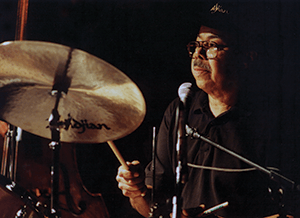PAS Hall of Fame:
Harold Jones
(b. February 27, 1940 )
by Mark Griffith

There are many compliments you can give a musician: musicality, taste, creativity, the ability to make everyone around you sound better. Harold Jones personifies all of those characteristics. But longevity is possibly the highest accolade one can give a musician, and Harold has that, too.
Jones played on one of the first jazz recordings to sell a million copies (Eddie Harris’ Exodus To Jazz), he helped create the initial fusion of jazz and world music in Paul Winter’s sextet, and when he took the gig playing drums in the Count Basie Orchestra for what was supposed to be two weeks, it lasted five years! Since then Jones has played with nearly all of the great jazz singers, including ten years each with Sarah Vaughan and Natalie Cole, five years with Ella Fitzgerald, and stints with Carmen McRae, Sammy Davis Jr., and Nancy Wilson. And after first playing with Tony Bennett in 1968, Harold has spent the past nine years again supporting the living legend Bennett. It is Harold’s reputation of giving the great singers exactly what they need that has led to a recent must-read book: Harold Jones, the Singer’s Drummer.
But it hasn’t been just singers. Harold has made extraordinary recordings with Oscar Peterson, Clark Terry, Gene Harris, and B.B. King, and appeared with nearly every major symphony orchestra including Boston, Atlanta, Chicago, London, Los Angeles, San Francisco, and Vienna.
Harold Jones grew up in Richmond, Indiana, where he received some very good early instruction from teachers Ben Graham, Robert Carr, Mary Minnick, and a Mr. Sherman. “Back then we had really good music instruction in the schools, which is really important,” Harold recalls. “I also had a private instructor named Jack Kurkowski. He was a vaudeville drummer who played in the pits, and he started me out playing on a 30-inch bass drum with temple blocks, cowbells, and all that stuff.”
After studying percussion at the American Conservatory of Music in Chicago (on a Musser Marimba scholarship,) Harold began working with everyone that he could. I began by asking Harold about his early study.
Harold Jones: In those days the drumset was not considered a “legitimate” instrument. So I spent time studying out of the books that we still see out there today: Stone’s Stick Control, Ted Reed’s Syncopation, and Jim Chapin’s book.
Mark Griffith: Early on, who were you working with?
HJ: I never really set out to work in any one direction or genre. Because I could read well, I worked in theaters doing musicals, I worked in nightclubs, the blues joints, I played any and everywhere that I could. Also because I could read, it was easier for me to sub for other drummers without much trouble. Then I heard Count Basie’s band. I had never heard such power and such beauty in music.
MG: Were you listening to Basie a lot back then?
HJ: I was listening to everybody: Max [Roach], Art [Blakey], Philly Joe [Jones]. I saw the band that Max Roach and Clifford Brown co-led, and I saw Miles’ [Davis] band with Wynton Kelly, Paul Chambers, and Philly Joe. I don’t think I have ever really come down off of that cloud. I went to see everyone I could playing live. I don’t ever remember eating or sleeping—just seeing, hearing, and playing music. I had to get a job during the day, so I got a job as an usher at Chicago’s Symphony Hall, where I got to hear all of that wonderful music as well. I heard the Chicago Symphony so much that when I listened to them from out in the hall, I could tell just from the sound of the orchestra if Fritz Reiner was conducting or if they had a guest conductor.
MG: When you were in Chicago, did you hear a lot of the local jazz drummers?
HJ: I used to hear a great gigging drummer around town named Marshall Thompson. Wilbur Campbell was always around working as well; Joe Segal used to have me sub for Wilbur a lot. Back then we would all go to Bill Crowden’s Drums Unlimited drum shop and hang around. You would hear of different bandleaders that needed drummers while you were there, or drummers would suggest possible gig opportunities to you. And if you didn’t get any gigs by hanging around, you were always learning from just being around the professional guys that were there. It was a real fraternity that was great for learning and building your career. I became the drummer at the Playboy Club in Chicago, and back then they would have a male singer, a female singer, and a comedian every night. So you would have to learn how the guys would sing, how the women would sing, and then you had to hit the rimshots for the comedians. I got called to fly to New York to play with Basie on New Year’s Eve, and from what I heard, I got called for the gig because I could read well. On my first night with the band, Jo Jones came up behind me and started talking to me, but I didn’t know who it was. He had heard that Basie had a new drummer, and he came down to see what I was wearing! Jo told me that I had to wear nicer shoes and dark socks over the white ones, and a white T-shirt under my shirt instead of a red one. He told me that I couldn’t afford to be pretty! I was so young that I was completely unthreatening to him and everyone else in the band.
MG: Did Papa Jo help you get the gig with Basie?
HJ: Jo really took me under his wing, but it wasn’t Jo that recommended me for the band. I was actually recommended to Basie by the trombone player in the band, Harlan Floyd.
MG: What did Jo Jones tell you about playing with Basie?
HJ: He told me to always listen to [guitarist] Freddie Green. Jo also told me that it was never about “me,” it was always about the band. And I still keep that in my mind today.
MG: How did you prepare for playing with Basie after the great Sonny Payne? Those were big shoes to fill.
HJ: There were a few drummers that came in to the Basie band after Sonny Payne and before me. The most prominent of them was Rufus “Speedy” Jones, but he wound up going with Ellington. So Sonny Payne would come back to the band for a few months and then leave; he was in and out of the band for a while. I used to listen to every record that Sonny made with Basie. There were certain fills on tunes like “Shiny Stockings” and “April In Paris” that I played exactly like Sonny, because they were the set-ups the band was used to hearing.
MG: When a drummer plays a groove or a fill that is so perfect, it becomes part of the tune.
HJ: Exactly. Who the hell was I to come in there with some sort of new idea and try to be fancier than Sonny Payne? I am proud to say that I took everything that I could from Sonny Payne. We didn’t call it stealing, but that’s exactly what I did.
MG: It must have worked because Basie called you his favorite drummer. Can you talk about the schedule that Basie had, and what you did to accommodate his hard-working itinerary?
HJ: My record with Basie was playing 67 one-nighters in 67 different cities in a row. The normal schedule was that we drove after every gig, got to the next town around 8 a.m., slept, got up and played at night, and then rode the bus all night after the gig. But I learned something important about playing every night from watching Buddy [Rich], Louis Bellson, and Papa Jo. After every night of playing, each of them would go backstage and take off the wet clothes and put on some dry ones before going outside. Louis would even rub down with rubbing alcohol, and Buddy would sit wrapped up in a towel or a robe to let himself cool down. That’s really important when you are working every night.
MG:So how did you become, as your book is called, the “singer’s drummer”?
HJ: It goes back to Chicago and the Playboy Club, really. But when I played with Basie, he always had singers with the band. I learned to just listen to the singer, and whatever you do, don’t step on the words. I learned that you never wanted to be playing a fill when they were singing “I love you…” It’s about keeping good time and staying out of the way. The hard part is knowing when to stay out of the way and when to be there! You keep both ears open, stay focused, and listen to the words. But with great singers—like Sarah Vaughan, for instance—she could phrase a word all the way through a measure and across the next barline and into a third measure. So you really have to pay attention. You can’t end your phrase until the singer has ended his or her phrase.
MG: Don’t let the drums get in the way of the story.
HJ: Exactly!
MG: Roy Haynes once yelled at me for not knowing the words to a song I was playing. Do you learn the words?
HJ: I learn how the lyrics are phrased in the tune, but no, I don’t know all the words to the tunes. Carmen McRae could sing a tune so slow you thought you were moving backwards. So the actual words weren’t as important as how the words were phrased in the song. But I do make a point of learning what each song is about. If a song is about love, you need to play that way. But I have been trying to learn the words to more songs recently.
MG: You are a master of what I refer to as “burning hot on a low flame,” which is the ability to keep the intensity high at a whisper. How do you do that?
HJ: I always call it a low burn. But that’s one of the reasons I use a 13-inch hi-hat. When you are playing with that intensity, you can’t afford to have a loose sound; your sound has to have a tightness, and you have to play very neat and precise in those situations. Because when the volume comes up, the tempo can’t increase, so you have to play in the same way when you play soft as when you play loudly.
MG: How much of your adjustment is in stick height and how much is in velocity?
HJ: When I do a trio gig, I set everything up very low and close to me. But if there are horn players on the gig, or if I’m playing with a big band, the cymbals go up higher and the drums are moved away from me a bit. It’s not an extreme change; the average person wouldn’t see the difference, but a drummer would.
MG: Do you change your equipment for different situations?
HJ: I change bass drum sizes from an 18-inch to a 20-inch. With a big band I use a deeper 20, so I don’t have to go all the way up to a 22. The bass drum is the main thing that I change, but with the big band I will sometimes use 9×13 and 16×16 toms instead of an 8×12 and a 14×14. I use the same cymbals, though. I use two heavier older Mini-Cup cymbals—one that has rivets and one that is plain.
MG: You have a wonderful touch on the instrument; what did you do to develop your touch?
HJ: That goes back to music school. I had to play a lot of mallets, and that really helped my touch and the tone that I got on the drum set.
MG:I’ve always thought that playing timpani really helped improve one’s touch. Did you play a lot of timpani in school?
HJ: You are right about that! Yes, I played a lot of timpani. I always tell my students that it’s okay to play matched grip on the drumset because you use matched grip on the timpani.
MG: When you play brushes, do you keep the snares on or off?
HJ: On! Back in the day, the reason that drummers turned the snares off was because the snare strainers weren’t as good as today. And if a P.A. speaker was too close to the drums—as they usually were—the P.A. system would get the snares buzzing, and that buzzing would be louder that what you were playing.
MG: What other drummers did you admire for their brush playing?
HJ: Of course, Papa Jo and Philly Joe. But Joe Hunt is also from Richmond, Indiana, and he really taught me about the beauty of the brushes. He told me about great brush players like Denzil Best. I got to spend some time with Kenny Clarke in Paris, and we would go around to different clubs and he would always start a tune with brushes, so by the time they got to the soloing the intensity was just unreal.
MG:What do you like to see from a big band chart?
HJ: That’s a good question. I like when an arranger creates an arrangement that captures the sound of the song, and paints a picture—not an arrangement that sounds like someone is showing you how intricate or fantastic he can write. I really respect arrangers like Nelson Riddle, Johnny Mandel, and Sammy Nestico, because they lay it down. I like to see indications above the staff as to what the horns are playing, and leave it up to me to hit it when I want to hit it or not. Sammy Nestico wrote very well for the drumset. I hate when an arranger writes out everything. When you play those charts, you are playing the composer’s version of the drum part, not your drum part.









